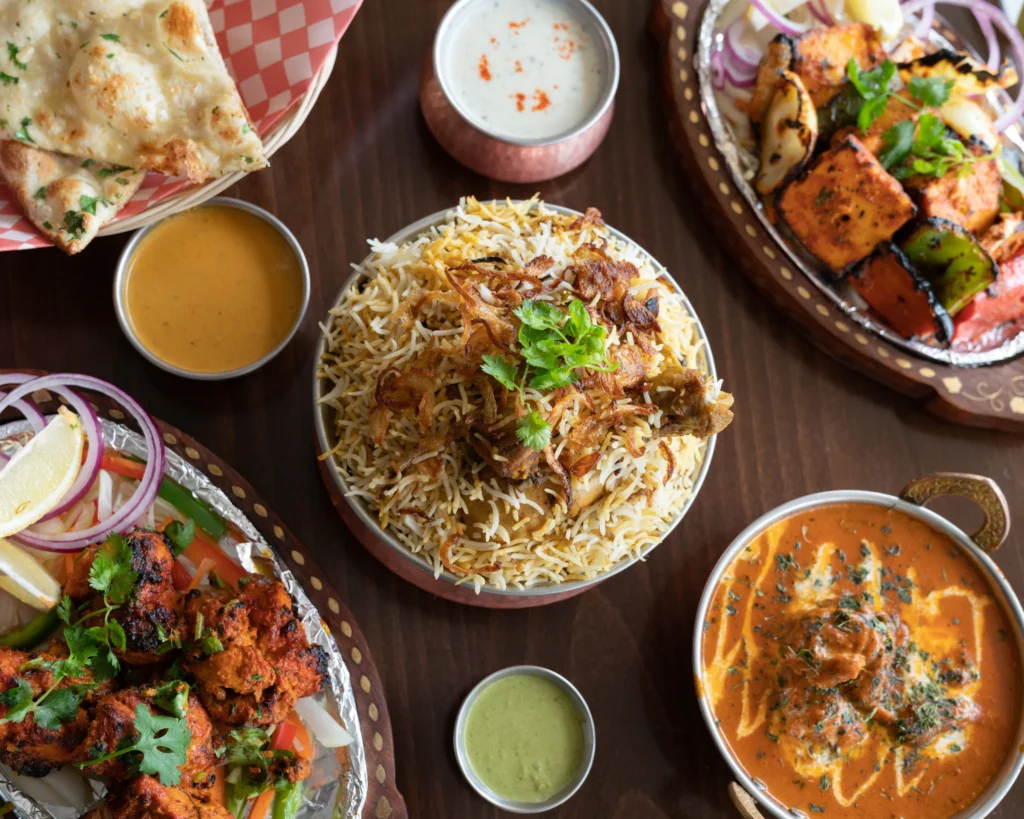
Mughlai cuisine is a royal culinary tradition that originated in the lavish courts of the Mughal Empire. It blends Indian, Persian, and Central Asian influences to create a cuisine of unparalleled depth, richness, and elegance. Every dish celebrates indulgence, steeped in history and prepared with meticulous care. Mughlai cuisine has transcended its royal beginnings to become a beloved part of global culinary heritage. It offers a feast for the senses with its intricate flavours, vibrant aromas, and luxurious presentation.
Chef Abdul, a Mughlai cuisine aficionado, explains, “Mughlai cuisine is not just about food; it’s about creating an experience that pays homage to an era of opulence, artistry, and timeless tradition.”
The Historical Roots of Mughlai Cuisine
The origins of Mughlai cuisine trace back to the 16th century, during the reign of the Mughal emperors in the Indian subcontinent. The Mughals brought Persian and Central Asian culinary traditions to India, blending them with local ingredients and cooking techniques.
The royal chefs, or “khansamah,” in the Mughal courts were tasked with creating dishes that reflected the empire’s grandeur. The results were recipes that combined exotic spices, nuts, dried fruits, and ghee, cooked using techniques such as slow cooking (“dum”) and layering flavours to achieve extraordinary complexity.
The Essence of Mughlai Cuisine
Mughlai cuisine is defined by its opulence and attention to detail. Every dish embodies a balance of flavours, textures, and aromas that highlight the ingredients’ richness and the cooking techniques’ artistry.
Key Characteristics
Key Characteristics
Signature Ingredients of Mughlai Cuisine
The Art of Mughlai Cooking
Mughlai cuisine isn’t just about ingredients—it’s also about the techniques that bring them together.
The “dum” technique involves slow-cooking ingredients in a sealed pot to trap the flavours. This allows spices and aromatics to infuse deeply into the dish.
Dishes like biryani and korma are built layer by layer, allowing each ingredient to contribute to the overall complexity.
Kebabs and tikkas are often cooked over charcoal to impart a smoky flavour that contrasts beautifully with the richness of gravies.
Iconic Dishes of Mughlai Cuisine
Mughlai biryani is a masterpiece of flavour and aroma. It combines spiced meat or vegetables with fragrant basmati rice. Ingredients like fried onions, dried fruits, and saffron elevate the dish to royal status.
A whole chicken is marinated in aromatic spices and stuffed with nuts and eggs before being slow-cooked to tender perfection. This dish commands attention at feasts.
This Kashmiri-inspired Mughlai dish features tender lamb simmered in a vibrant red curry with saffron, yoghurt, and a mix of spices.
Crisp fried bread is soaked in saffron syrup, topped with rabri (sweetened, thickened milk), and garnished with nuts—a dessert for royalty.
The Cultural Impact of Mughlai Cuisine
Mughlai cuisine’s influence is evident in modern North Indian cooking, particularly in butter chicken, naan, and tandoori creations. Today, restaurants worldwide showcase Mughlai dishes, making this royal tradition accessible to a global audience.
Chef Abdul’s Insight: “Mughlai cuisine bridges the gap between heritage and innovation—it remains timeless yet evolves to suit modern tastes.”
Bringing Mughlai Cuisine to Your Kitchen
Cooking Mughlai food at home requires patience and precision, but the results are well worth the effort.
Tips for Home Cooks
Recipe Spotlight: Mughlai Korma
Ingredients:
Method:
Chef Abdul’s Tip: “Don’t rush the cooking process—allow the flavours to develop slowly for an authentic taste.”
“Mughlai cuisine is a journey through time,” says Chef Abdul. “Each dish carries the grandeur of an era when food was an art form crafted to please emperors. Cooking or eating Mughlai food isn’t just about the flavours—it’s about connecting with history and culture.”
Dive into the luxurious world of Mughlai cuisine and let every bite transport you to the royal courts of the Mughal Empire. Whether savouring a creamy korma or indulging in a fragrant biryani, Mughlai food promises a feast for a king.
What’s your favourite Mughlai dish? Share your culinary stories in the comments below!
Chef Abdul © Copyright 2024. All rights reserved.